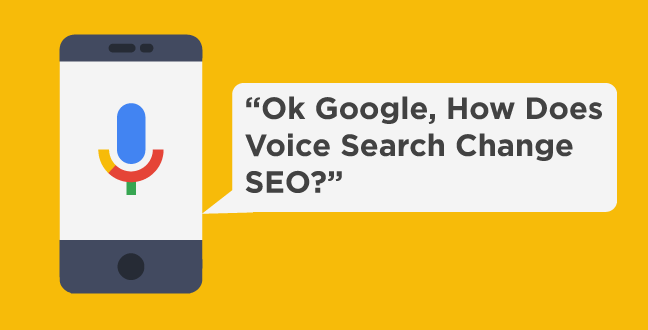“Hey,
Google! Do this, do that”, at first glance this seems like a bit of fun at home
or in the office, but voice search is becoming increasing important for your
business to consider with Search Engine Optimisation (SEO).
As of late last year, there are a reported 33 million users
using voice search bots, whether it is Siri on the iPhone, other assistants on
smartphones or devices like Google Home or Amazon Echo.
With these numbers
growing year on year, advancement in smart technology, Comscore predicts 50% of
all searches with be carried out using voice search, with 20% of these without
a screen.

So, what does this mean for your business?
Your business needs to keep up with the times and prepare for this, with users going away from traditional search to voice search consider how your website will be found via voice.
Things to consider include:
Aiming for position zero: Something that featured heavily in a recent blog we posted on ‘Featured Snippets’, Google Home & Google Assistant read these out first.
Consider what questions your customers commonly ask and pop up that relate to your core products & services and build content around this. But where traditional SEO in the past relies heavily on keywords & content, simply answer the question.
Keep the answers concise, conversational, almost to the point where it comes across conversational.
Perfecting your local SEO: 39% of voice search users are looking for businesses information, so ensure your Google My Business listing is optimised and complete. Complete your profile so when a user asks to find local businesses your business appears at the top.
Verify and authenticate your business on things such as Google Maps & Google My Business. Little things like a fully completed listing with store times, services and a bit about what you do go a long way to helping you achieve voice search success.
For example, when a customer asks, ‘where can I find t-shirt printing in London?’, ‘what time does the nearest printers shut?’, ‘where is my nearest printer?’, these little things will help your business get found using voice search.
On-page content: Steering away from traditional SEO where content is built around keywords and lots of content creation, content that will be found using voice should be concise, grammatical and answer the question appropriately. It should reflect how you might engage with another user and not a Google bot.
Focus on providing text that your customer may find useful and helpful, things like FAQs, help with print & embroidery, they want the answers and they want them within seconds. On average, each user will not listen to an answer for voice search over 15 seconds, you have that amount of time to get your point across to the customer – its all about “meeting the information needs of the customer”.
Important: There is still room for traditional SEO, do not go rushing to your website deleting pages of content. Just consider if this is authentic content, useful for the user and helps your customer with whatever their query might be.
The factors mentioned in this article also aide traditional SEO, things like writing content in a naturally, engaging and conversational way, optimising local search etc will all help your website get found online and visible in Googles SERPs.